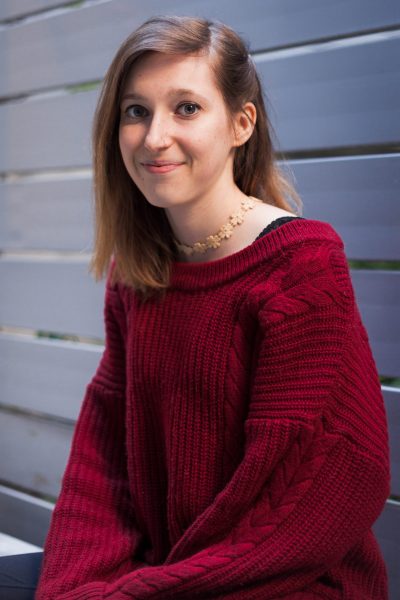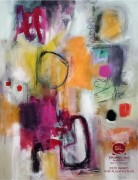Tell us about the first tiny world you ever constructed.
I don’t know if this was my first, but when I was a little kid, I once made a diorama out of Peeps. I glued tiny clothes onto them and made a disco café in a shoebox. I don’t really know why. It wasn’t for an assignment or anything. I had just bought this really odd calendar with similar dioramas, and I wanted to create my own. I wish I had photographs, but I deleted them all when I got older and became ashamed of how weird I was.
Loss is the great human equalizer; it is vast and crushing and coming for us all. It’s difficult to reckon with loss in the space of five hundred pages, let alone five hundred words. For you, how is flash particularly conducive to dealing with loss?
Loss is a difficult topic to grapple with in any form, I think. With flash, it’s slightly easier for me because there is less room for melodrama. It doesn’t allow me to exaggerate or drag out description that could be condensed. If I have two sentences to describe a death, then I have to find the best possible two sentences. I can’t meander. I have to strip the story down to its essential elements, choosing the details that matter only for this singular scene. I also think flash is inherently more reflective of what loss actually feels like. It doesn’t hit all at once—it’s a series of small flashes, of memory and of grief and of anger. My goal with this story was to portray one strong moment of loss shared between a father and daughter, nothing more and nothing less.
I was struck by the notion of circling objects in the piece (cupping the mug, circling the tower, those spring tornadoes). Circling can be seen as an analogy for how we skirt things like pain, loss, truth, consequences. Please talk a bit about circling—do you see it as a means of avoidance, or as a way of coming to terms with things, only indirectly?
I definitely see it as a way of coming to terms with things. Sometimes, it’s impossible to deal with difficult emotions head on. For the father in this story, the only way he could grapple with what had happened was by constructing all these tiny paper buildings. That might sound like avoidance, but to me it’s another way of comprehending his own grief. To realize what’s missing, he has to see all that used to be there, in a concrete and physical sense. He has to recreate the landscape where the loss took place in order to truly feel the absence.
I love this line, referring to a sliver of light: “Like a moth, I followed it.” Name an animal or two, and tell us how you might strive, in future, to imitate their behavior.
I’ve always thought hedgehogs are amazing animals. They’ve got spikes, so they know how to protect themselves, but when they’re comfortable in a situation, those spikes come down. I think that’s a pretty intelligent way to live. Knowing when to defend yourself, but also knowing when you’re safe.
What is your favorite color and when did you last will it into existence?
I don’t know that I have a favorite color, or if I do, it changes pretty frequently. I really like lavender, aqua, olive green. During quarantine, I’ve become a solid believer in coloring books as a form of stress relief, so I’m willing these colors into existence on an almost daily basis. 🙂



 The core workshop of SmokeLong Fitness is all in writing, so you can take part from anywhere at anytime. We are excited about creating a supportive, consistent and structured environment for flash writers to work on their craft in a community. We are thrilled and proud to say that our workshop participants have won, placed, or been listed in every major flash competition. Community works.
The core workshop of SmokeLong Fitness is all in writing, so you can take part from anywhere at anytime. We are excited about creating a supportive, consistent and structured environment for flash writers to work on their craft in a community. We are thrilled and proud to say that our workshop participants have won, placed, or been listed in every major flash competition. Community works.